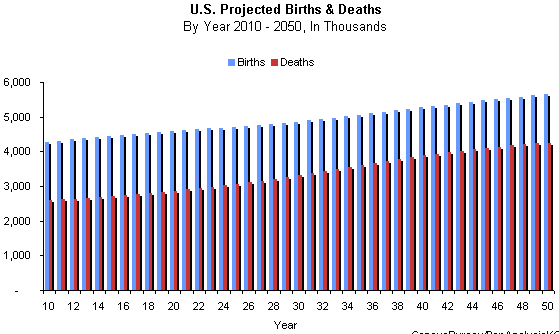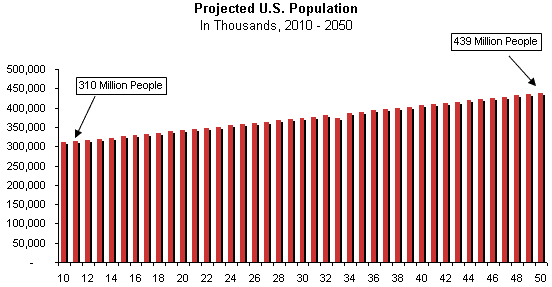IDEX Online Research: Jewelers - Target Female Self-Purchasers, Part 12
December 10, 09
The model family of the 1950s, Dad is the sole earner and Mom is at home cooking three hot meals a day, is hard to be found in the U.S. these days. In this multi-part series, we are looking at what this means for jewelers. The good news: more women than ever before work outside of the home and now have the discretionary income to buy jewelry for themselves. The opportunity: more women shoppers being born.
Aside from the cultural norms in America – the country with the more cathedrals of consumption (malls) than any other country in the world, whose motto is “Born to Spend” – the U.S. population base is expected to continue to grow over the long term. This is dramatically different from some other affluent regions of the world – notably Eastern Europe – where the population is expected to decline modestly over the next several decades. Even in the fast-growing market of China, its population is expected to peak sometime in the decade of 2040, and then begin to decline, unless its political leaders eliminate birth control requirements.
The U.S. Census Bureau makes population projections for the next several decades. The graph below illustrates its expected birth rate compared to its death rate.

Source: US Census Bureau
The following graph summarizes the projected increase in the U.S. population over the next four decades. Births, deaths and net inward migration (immigrants) are used to calculate these estimates.

Source: US Census Bureau
How Jewelers Can Capitalize on the Opportunity
In focus group interviews, women say that jewelry is perfect for celebrating life’s milestones. For example, women think a gift of jewelry is appropriate for marking a promotion, earning a degree, surviving cancer, running a marathon, and spending part of an inheritance on a piece to remember the love one. Jewelry can even mark the end of the divorce process, according to some women.
- Self-purchasing Boomer women represent a special opportunity for jewelers. They have the soundest financial base, and the women are in a place in their marriage where they don’t need to wonder how their husband will perceive their purchase.
- Among Millennials (Americans born between 1979 and 1998), more women are graduating from college than men. Those women are holding more white-collar well-paying jobs. In some metropolitan areas, Millennial women are making more than Millennial men.
- Jewelers need to focus on milestone events with customers, especially the Millennials. They should point out the function of jewelry as an accessory to their wardrobes. Staples like studs, a right-hand ring, a tennis bracelet and other core pieces should be presented to all women.
- Jewelers should assume that the woman is shopping, buying and paying for the purchase. Far too often, jewelers assume that there will be a male who will come in and plunk down a credit card as payment. That’s a false assumption in today’s market.
- Women love shopping, and they pride themselves on the art of the deal. Retailers must be at the top of their game to reach this lucrative consumer base. Women take their time shopping. They not only appreciate fashion – style and design – but contrary to popular opinion, they want the “specs” of the jewelry so they can verify that they are getting a good value.
- Jewelers need to recognize the other merchants which are vying for the same discretionary spending of self-purchasing females. Jewelers’ competition includes those merchants who sell the following items:
- Scarves
- Sunglasses
- Shoes
- Handbags
- Cosmetics
- Accessories